The scientific conference IMPLANTOLOGY with serial number 26 is over. On Friday, 19 April, Stages Hotel Prague hosted experts in dental implantology. The attractiveness of the topics and the speakers is evidenced by the tremendous interest of the audience. So huge that the conference hall was filled to the last seat and we thank all the participants for that.
MUDr. Jan Dražan prepared a lecture for the audience called Large maxillary and mandibular reconstructions using implants. When treating patients with residual dentition or completely edentulous patients, the doctor must try to meet the demanding requirements of clients for whom the entire procedure is associated with a fear of procedures and a concern for a perfectly functional and aesthetic replacement. Often, the implantologist must act as a psychologist at the same time. In numerous case studies, which described in detail all stages of treatment from planning to final metal-ceramic and zirconium bridges, he demonstrated how to proceed, for example, in the case of treating patients with chronic periodontitis, or in orthodontic patients for whom extensive works supported by implants are indicated. He also presented works older than 10 or 12 years, thereby demonstrating the long-term stability and function of the presented procedures. He also mentioned possible complications such as peri-implantitis or failure of the prosthetic supraconstruction and showed their possible solutions at the same time.
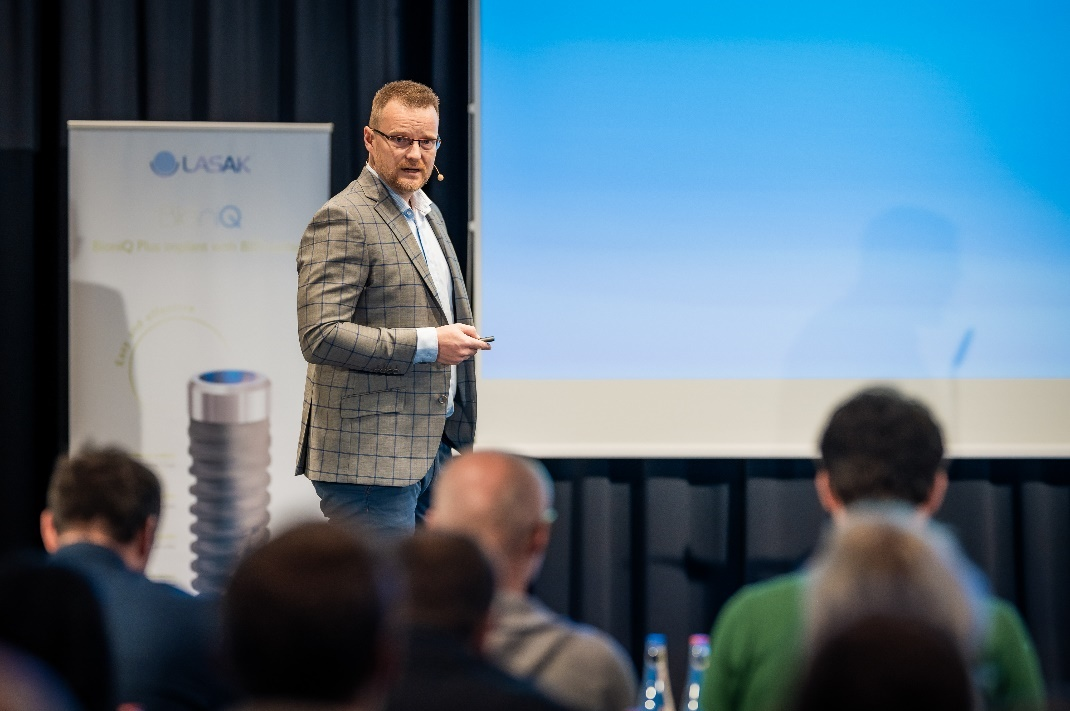 Dr. Jan Dražan giving a lecture at the IMPLANTOLOGY 2024 conference
Dr. Jan Dražan giving a lecture at the IMPLANTOLOGY 2024 conference
Dental implants are considered a reliable tooth replacement option; nevertheless, their reliability has its limits. Assoc. Prof. Dr. Martin Starosta, Ph.D. in his lecture entitled Causes of non-healing implants, discussed both primary and secondary implant failures in terms of the factors that influence them. He then looked in detail at the data collected on 468 BioniQ implants. After analysing the causes of primary failure, he concluded that primary implant failure is related to local conditions rather than poor overall health.
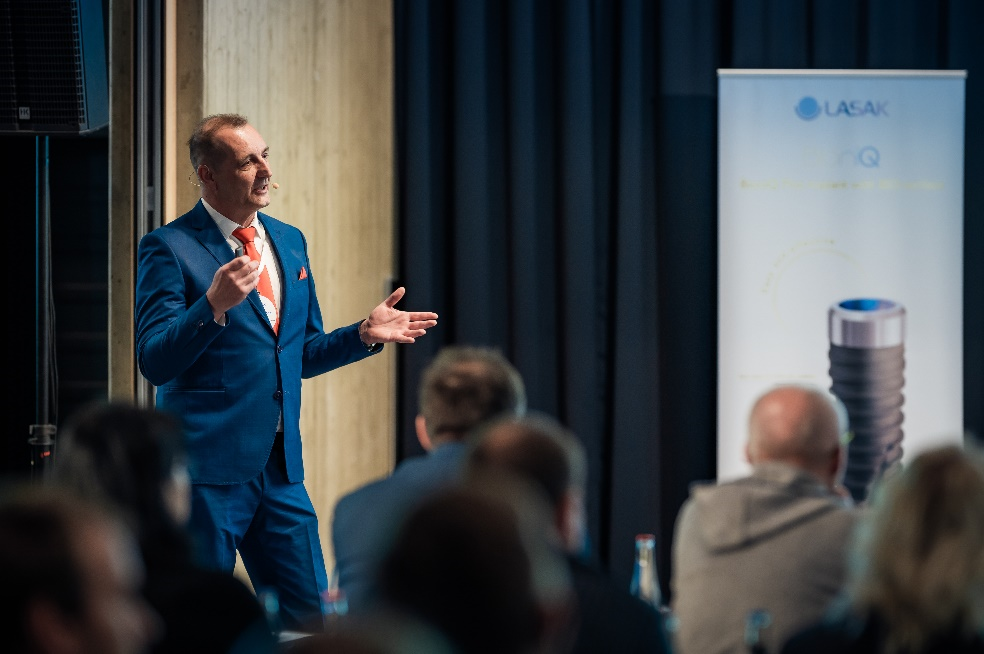 Assoc. Prof. MUDr. Martin Starosta, Ph.D. during his lecture at the IMPLANTOLOGY 2024 conference
Assoc. Prof. MUDr. Martin Starosta, Ph.D. during his lecture at the IMPLANTOLOGY 2024 conference
German lecturer Dipl.-Stom. Michael Kirsch discussed the reliability and potential problems associated with implant treatment in elderly and very old patients based on case studies from his own practice. Although higher age is no longer automatically considered a decisive risk factor for complications in implantological interventions, it is necessary to carefully weigh the potential risks that may occur in the long term when planning the treatment. Treatment planning should take account of requirements for implants suitable for the given age, in particular, with regards to the increased risk of mucositis and periimplantitis.
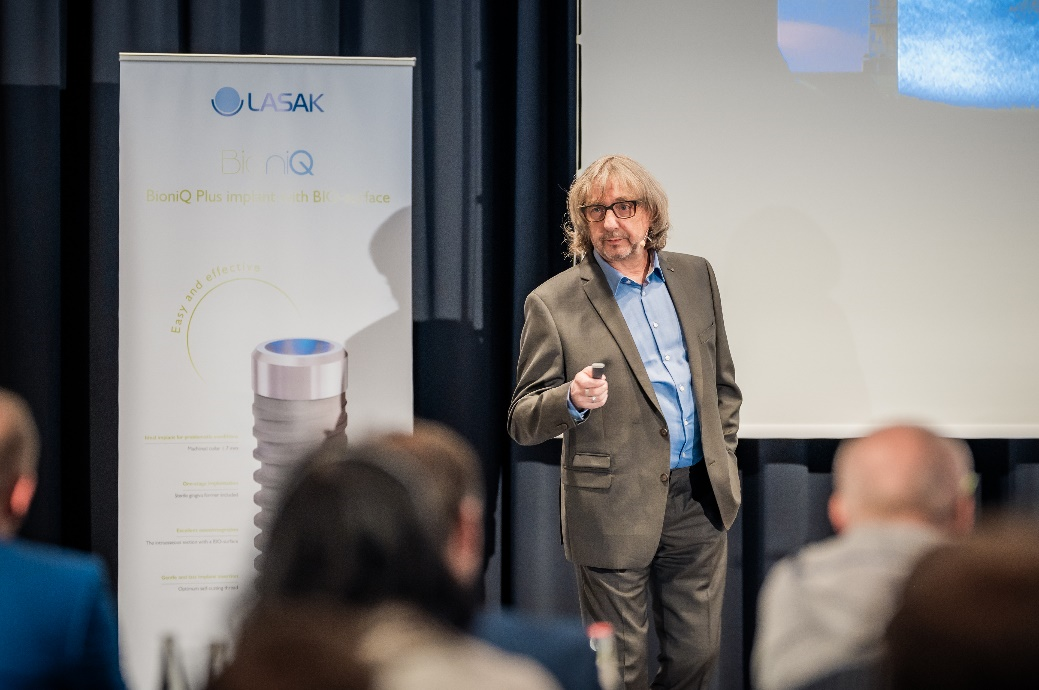 Dipl.-Stom. Michael Kirsch giving a lecture at the IMPLANTOLOGY 2024 conference
Dipl.-Stom. Michael Kirsch giving a lecture at the IMPLANTOLOGY 2024 conference
MDDr. Michal Novosad discussed in great detail different approaches to managing different types of horizontal alveolar ridge defects. He showed in practice how the choice of augmentation technique can be individualised according to the nature of the defect and the place of implantation, what are the situations where autologous bone is unrivalled and where we can take advantage of the simplicity of using artificial bone substitutes. On his own case reports, he showed, for example, the use of the carotta technique, the augmentation method according to Khoury, the sausage method, as well as other approaches. He also emphasised that the augmentation technique plan cannot be guided only by the nature of the defect, but also by the possibilities of harvesting autologous bone grafts. It is always necessary to work effectively rather than invasively.
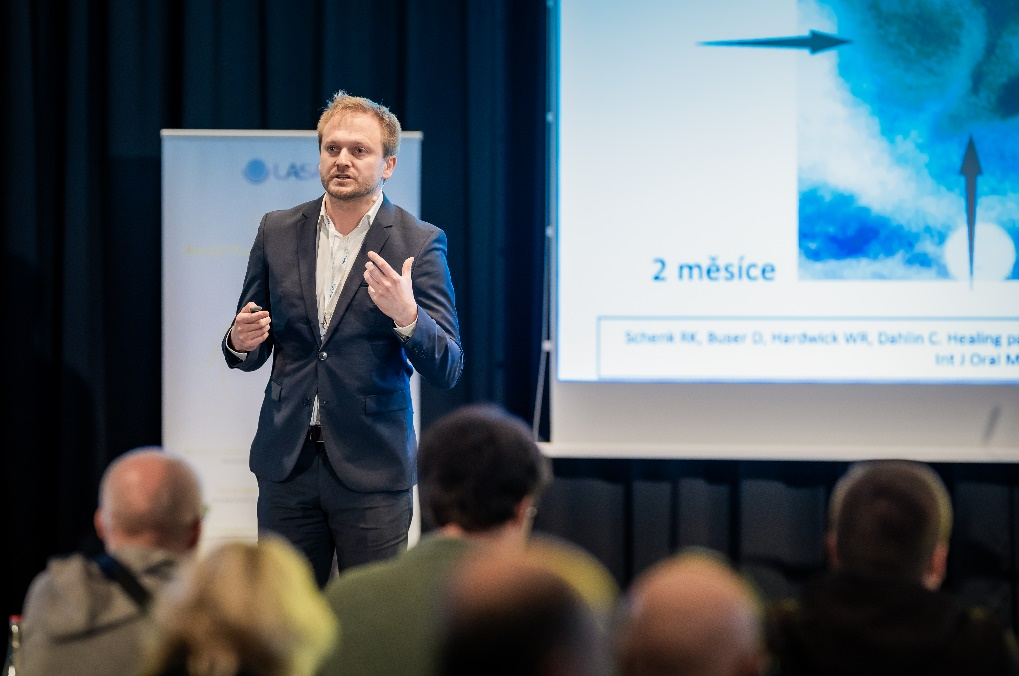 MDDr. Michal Novosad giving a lecture at the IMPLANTOLOGY 2024 conference
MDDr. Michal Novosad giving a lecture at the IMPLANTOLOGY 2024 conference
Fully digital workflow is beginning to control our offices. When it comes to small prosthetic reconstructions on teeth or implants, the precision and accuracy of some intraoral scanners is not only sufficient, but also significantly exceeds the conventional impression technology. As for large reconstructions, the situation is completely different due to the fault of all intraoral scanners caused by the fact that small 3D scans are merged together to form a 3D software model of the entire jaw. MUDr. Pavel Hyšpler presented the Reverse scan technique, which he developed and has been using for many years at his office for the fabrication of all large works supported by implants. In his lecture, he also presented the results of in vitro and in vivo studies evaluating the accuracy of this method, compared to a classic impression and a simple intraoral scan.
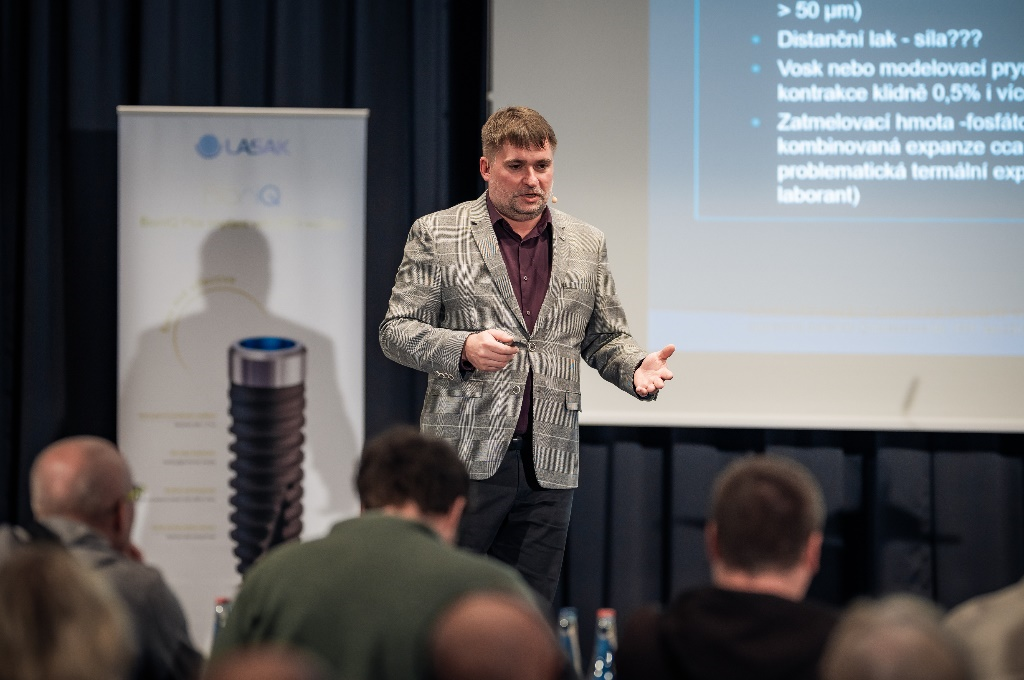 MUDr. Pavel Hyšpler giving a lecture at the IMPLANTOLOGY 2024 conference
MUDr. Pavel Hyšpler giving a lecture at the IMPLANTOLOGY 2024 conference
Technological advances and procedures help us simplify, refine, and accelerate the entire workflow or some of its steps. In dental implantology, such technological procedures include static and dynamic navigation. Although the principles of passive and active navigation are clear at first glance and their use looks quite simple, their utilisation in everyday practice has many limitations, which were discussed in detail in the lecture of MDDr. Michal Čičmanec. In conclusion, he reminded us that navigation is not suitable for beginning implantologists, although the manufacturers of these solutions often proclaim them as such.
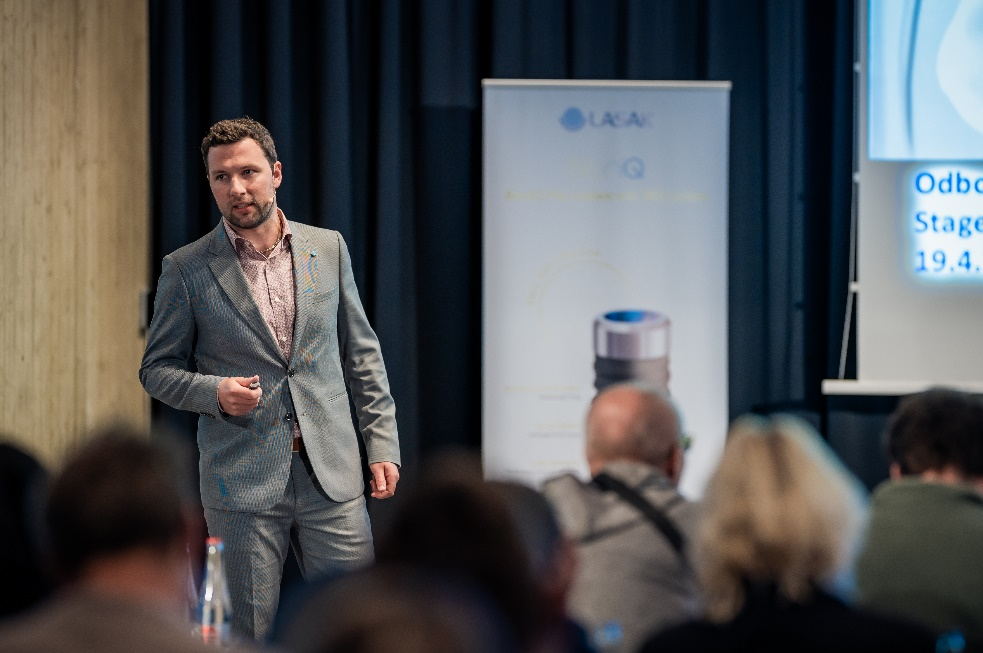 MDDr. Michal Čičmanec giving a lecture at the IMPLANTOLOGY 2024 conference
MDDr. Michal Čičmanec giving a lecture at the IMPLANTOLOGY 2024 conference
Acknowledgements
Thank you to all the speakers, partner companies and all participants, and we look forward to seeing you at next year’s event.
Special thanks go to the expert moderators of the conference MUDr. Dana Kopecká, Ph.D. and Assoc. Prof. MUDr. Martin Starosta, Ph.D. for ensuring that the lectures went smoothly and for their professional management of the discussions.
LASAK Team